One of the things that I love about Girevoy Sport (GS) is that it is an ideal fit for busy people with full time jobs. Except for maybe in Russia and the Soviet Union countries, in most competitions around the world you will see that most competitors work full time jobs and get to train with kettlebells for maybe less than 4 hours a week. I would say that the simple nature of the sport which requires 3 or less events to train for along with a few basic assistance exercises, and also the fact that it can be easily practiced at home in isolation, makes it a great choice for time bound people.
Samrat Sen is one such perfect example of how the sport can be practiced by anyone irrespective of their work schedule. He works full time in the tough corporate world, and still managed to become the fastest rising kettlebell athlete in India! Having been involved with different forms of exercise at various times in his life, today he is a focused Girevik and is the first man in India to compete in 24 kgs biathlon. So let’s get to know better this hard working, upcoming lifter, who also happens to be one of my closest friends in my personal life. It will be interesting to know how he manages to keep up with the demands of his job and GS.
Arnav Sarkar (AS):Hi Samrat. First of all I would like to thank you very much for taking the time out of your busy schedule to do this interview. Could you begin by telling us a bit about your background and what forms of exercise you were involved in earlier?
Samrat Sen (SS): Hi Arnav, you are most welcome, and also thank you for considering me for the athlete spotlight section.
Well let me start by saying I have always been inclined with sports and games from a very young age. I played competitive cricket for my state during my school days for many years. After graduating from high school, I realized a lifelong dream of learning martial arts. I took up Kickboxing from my college days and eventually went onto become national silver medalist in a couple of years.
The body building bug too had bitten me, hence I had joined a gym and started to train without any proper guidance. The focus then was just getting big. Due to a lack of good trainers back then (10-12 years back) there was no sound approach towards fitness and nutrition in general.
Back in the day, concepts like functional training, Kettlebells, Olympic lifts these were not so prevalent, and our training was really incomplete in the truest sense.
AS: How did you begin with kettlebell training? What did you feel like after your first few sessions of training with kbs?
SS: I started training with Kettlebells in 2012, but that was intermittent at best. But it was in early 2013 I bought my first pair of 20kg Cast iron bells.
The first few sessions were tough. At first I found them quite heavy due to the displacement of the weight. Just doing farmer walks with them tore up my palm. I used to muscle up the bells and got slammed quite a few times during cleans. Training with KBs was very challenging, even after spending years doing the traditional ‘gym training’ I was humbled big time. I knew this was not going to be easy.
AS:How long after you started training with kbs did you start getting the desire to try Girevoy Sport?
SS: I trained with Kettlebells regularly and did them as an add-on to my strength training programme. Those days workouts with Kettlebells used to be rep based rather than time based.
Overtime I started benefiting from kettlebell training and took further interest in this tool and started researching on Girevoy Sport (GS). Over the internet and social media I came across lifters who lifted much heavier bells (24,s 28s, 32s) for a continuous 10mins resulting in a crazy number of repetitions. These lifters showcased tremendous strength endurance, and superb technique to have lasted the full 10 and get such high numbers.
So if regular K-Bell training can get one fit, what can Girevoy sport do to you? I asked myself and decided to learn the art of Girevoy and further my own fitness.
AS: How did the first few sessions of GS training feel like? Did you straight away feel comfortable or you started having second thoughts?
SS: If I thought general K-bell training was tough, I had no clue what time based GS specific training is! The minutes felt like hours! During the sets I used to ask myself –what have I done to deserve this punishment?!’ I was far from comfortable. The racking, the overhead stability everything was difficult, and the fact that you cannot keep the bell down and only allowed just one hand change beat me up mentally.
Slowly and gradually my body and mind started adapting to this new form of training, and since then there has been no looking back.
AS: What is your current training program like?
SS:Well, right now I am preparing for the Asian Championships and a host of other competitions lined up during the year, and I am preparing to go with Long Cycle. My workouts are very GS centric, the LC working sets being a major part of the training routine. Also to add the GS work, some assistance work is thrown in like jump squats, bumps, snatches, squats and a lot of running.
Current focus is to increase the cardiovascular capacity as the demands of cardio with LC is great. Focus on better pacing, efficient use of energy, it’s all part of the training programme. It’s a learning process as you get better and fitter.
AS: What are some of your best numbers in GS, both in competition and in training?
SS: These are still early days for me in GS, but some of the numbers which I have got so far would be:
All in 10mins:
2 X 24Kg Biathlon: 28jerks/81 Snatches
2 X 20kg Biathlon: 58 Jerks/ 141 Snatches
2 X 20kg Long Cycle: 50 Reps
20kg Snatches: 155 reps
16kgs Snatches: 205 Reps
The above numbers are all more than 6-8months old, except the Long Cycle. Very soon l will be getting new PRs ;)
AS: Which are some of your most satisfying moments in the sport?
SS: One of the most satisfying moments would be in Kolkata Kettlebell Championship 2015 where I competed in the professional category with 24kgs and won Gold and in the process being the first Indian to officially compete with 24kgs Biathlon.
Also whenever I complete a good 10min set in practice it gives me immense joy, a 10min set is always a mountain to climb.
AS: What is your current nutrition plan like?
SS: As this is strictly a performance oriented sports, maintaining the daily’s caloric intake is necessary.Focus on high quality protein is a must, with adequate carbohydrate and fat intake for sustenance. I try to keep things simple and focus on regular food for all around nutrition.Special mention regarding fluid intake pre-during-post workout as this part of the world is known for its humidity levels, which results in massive fluid loss. Make sure you are taking your electrolytes
My core focus is numbers and performance and for that I choose high quality food sources.
AS: Tell me about your experience with the International Girevoy community? I know for a fact that a lot of international lifters have often told me a lot of good things about your potential and abilities having seen your videos.
SS: They are very kind and have always encouraged me.Iam really grateful to them. The GS community overall is a small community but an extremely tight knit one. Wonderful supportive people, helping out each other and a lot of encouragement and motivation is provided to new lifters.
AS: How do you find the motivation and the energy levels to train in a regular manner despite having a full time job?
SS:It is tough, frankly very tough. After coming back from work I often feel fatigued or sleepy, after slogging it out for 8-10 hours a day. But what keeps me going is the love for the sport and the pursuit of taking my conditioning to the next level. Once I do the first set,I am on track to finish the rest of the workout. But getting to that first set is the tough part.
AS: What have been some of the biggest challenges that you have faced so far in your GS journey, and how have you overcome them?
SS: One of the earliest challenge was getting the technique right, correct form is extremely important if you want to achieve high numbers in GS. In the initial days I trained with lighter KBs focused on understanding the form solely, but there were still drops in form which caused some injuries.
Injuries were in the form of Soft tissue damage in the forearm, ripped finger nail, back spasms, trigger point issues. Well one can overcome these injuries by working around them, like when my finger nail was ripped during double cleans, I iced it, taped it up heavily and continued training. Did it make a difference? Yes it did, lifting was tougher, and I used to be too conscious due to the injured finger, but this is how it is, and this is how I have trained.
At the end of the day you have to judge whether you can train with your injuries or not. Yes some injuries can be too serious and if you still continue to train then that might be stupid as you will be doing more harm than good. At the end of the day it’s your call to take the wiser decision.
AS: What are you future goals in GS?
SS: To get better at the sport itself, achieve higher numbers with more efficiency and finally getting to the Master of Sport rank. That would be good! And of course the biggest goal is to represent India in Kettlebell Sport.
AS: Who do you look upto in the sport for inspiration and guidance?
SS: That would be so many. Every day I come across such amazing GS lifters across social media, the sheer numbers that they put up is mind boggling, with the most efficient technique till the last minute.
Some of the international lifters who inspire me and I like to watch would be (Not in any order): Denis Vasilev, Ivan Denisov, Anton Anasenko, Charlie Fornelli, Sergei Ranchinskiy, Thierry Sanchez,Pierre Megaard Knudsen,Valery Federenko, Gregor Sobocan ,Aleksander Khvostov, Ksenia Dedyukhina, Melissa Swanson.
And course Arnav Sarkar for being the first and only 32kg KB lifter in India.
AS: Thank you, and I am sure that you will also be soon competing with 32’s. Moving on, what advice would you give to those who are looking to start in GS?
SS: GS is tough, I will be very honest. Those who want to start GS and become a KB sport athlete, this is a tough learning curve. One has to be tremendously focused, has to have rock solid dedication, and time management is of high importance. All other lifts and variety GPP should be inculcated to work around your primary GS programme. It has to be GS specific training 3 days a week minimum for beginners.
GS is a sport which can make u feel very high one day and bring you right back to earth the next day. So approach each session fresh and without any baggage of previous performances.
This is a long tough journey but the end result is doubly rewarding. It’s worth all the blood sweat and tears.
AS: Any final thoughts?
SS:Well I would like to say that deciding to be a KB Sport athlete has definitely been a great decision for me. This beautiful sport has rewarded me with all the benefits that it has to offer (Better health, stronger mental focus and achieving my goals.)Anyone who decides to start the GS journey will on a path to betterment.
Big thank you to you again Arnav, it was great sharing my GS experience with you. Good luck

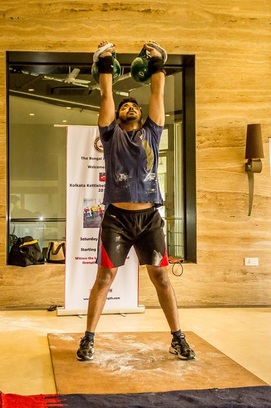
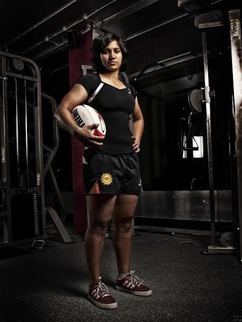
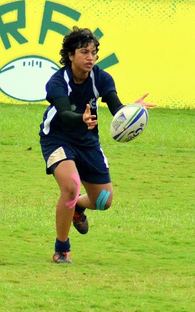
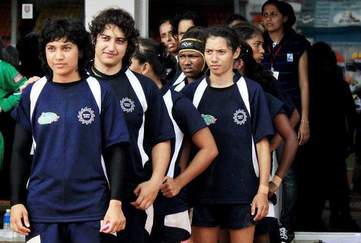
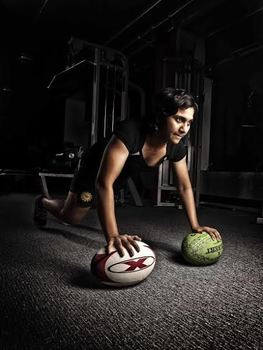
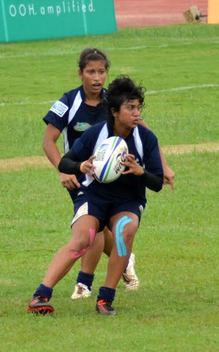
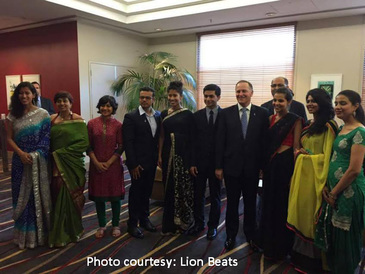
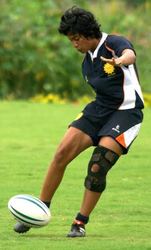
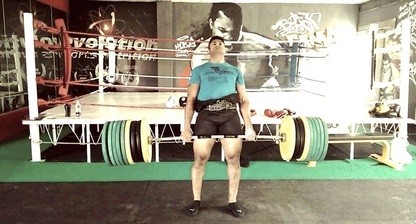
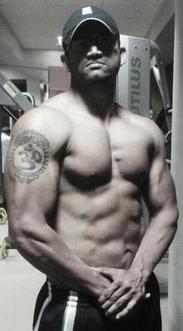
 RSS Feed
RSS Feed
